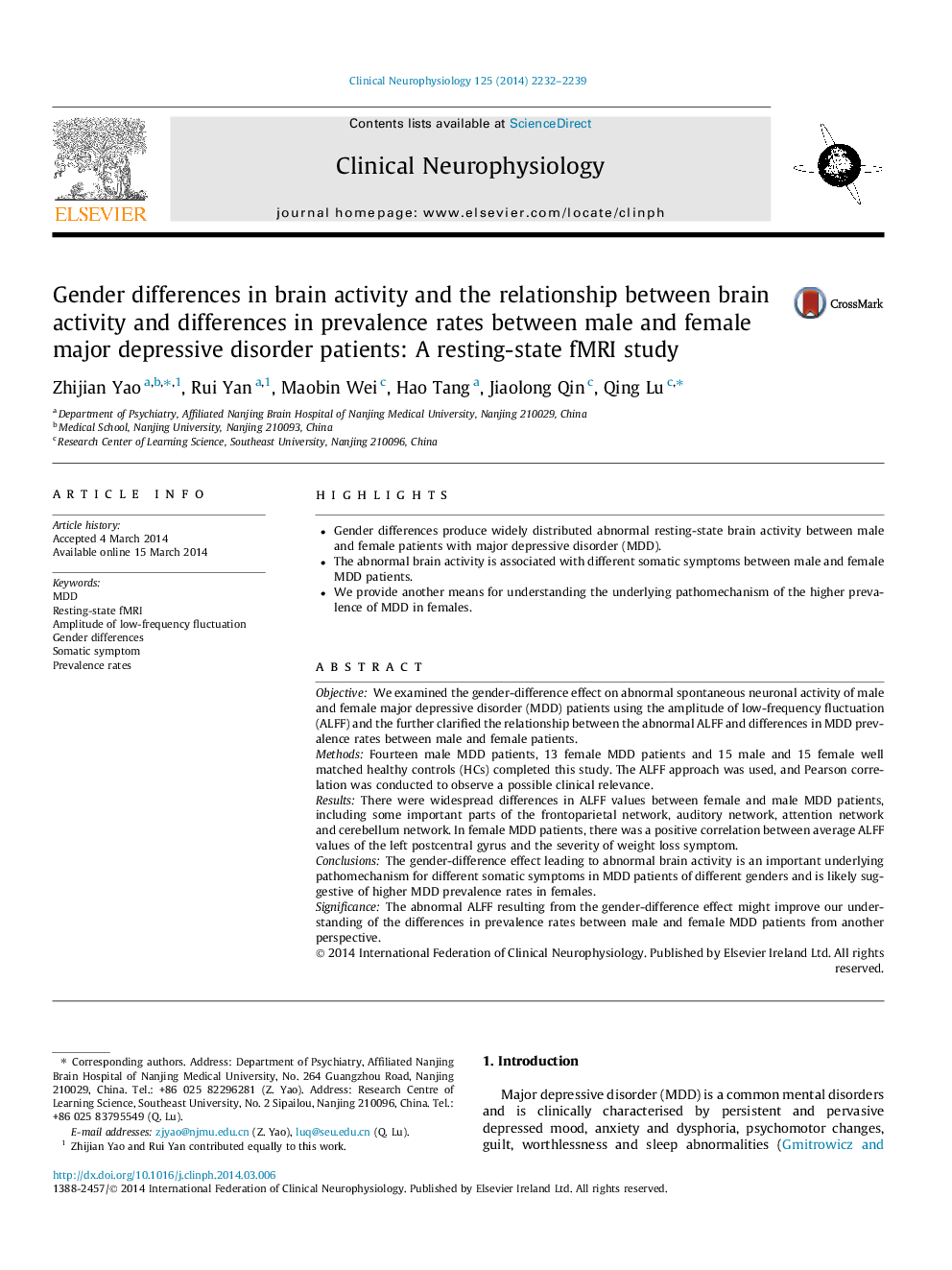| Article ID | Journal | Published Year | Pages | File Type |
|---|---|---|---|---|
| 3043670 | Clinical Neurophysiology | 2014 | 8 Pages |
•Gender differences produce widely distributed abnormal resting-state brain activity between male and female patients with major depressive disorder (MDD).•The abnormal brain activity is associated with different somatic symptoms between male and female MDD patients.•We provide another means for understanding the underlying pathomechanism of the higher prevalence of MDD in females.
ObjectiveWe examined the gender-difference effect on abnormal spontaneous neuronal activity of male and female major depressive disorder (MDD) patients using the amplitude of low-frequency fluctuation (ALFF) and the further clarified the relationship between the abnormal ALFF and differences in MDD prevalence rates between male and female patients.MethodsFourteen male MDD patients, 13 female MDD patients and 15 male and 15 female well matched healthy controls (HCs) completed this study. The ALFF approach was used, and Pearson correlation was conducted to observe a possible clinical relevance.ResultsThere were widespread differences in ALFF values between female and male MDD patients, including some important parts of the frontoparietal network, auditory network, attention network and cerebellum network. In female MDD patients, there was a positive correlation between average ALFF values of the left postcentral gyrus and the severity of weight loss symptom.ConclusionsThe gender-difference effect leading to abnormal brain activity is an important underlying pathomechanism for different somatic symptoms in MDD patients of different genders and is likely suggestive of higher MDD prevalence rates in females.SignificanceThe abnormal ALFF resulting from the gender-difference effect might improve our understanding of the differences in prevalence rates between male and female MDD patients from another perspective.
